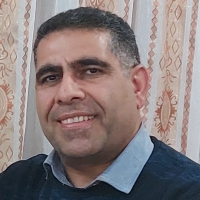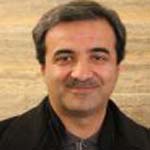Geomorphodiversity index: Quantifying the diversity of landforms and physical landscape of the Mishu Mountains, Northwest of Iran
Geodiversity is recognized as an important aspect of nature conservation in itself and is a material consideration in planning decisions in developed countries. In recent decades, many researchers have turned their attention to the definition of geodiversity and its relationship to biodiversity, natural environment protection, ecosystem services, and geotourism. In the emerging science of geodiversity, geomorphodiversity evaluates the shape of the surface features of a place or region. Different geomorphological landforms may occur in a geographical environment that creates a variety of landforms called geomorphodiversity. The purpose of this study is to provide an indicator of geomorphodiversity as an attempt to replace landforms with DEM-derived morphometric parameters and finally to prepare geomorphodiversity maps of the study area; Geomorphodiversity Index (GmI). DEM As the only input data, this approach makes it possible to achieve topographic variables with different horizontal resolution and vertical accuracy and to test more than one topographic data for an area. Thus, the GmI method uses geomorphological data only for result validation and not as input parameters to avoid the limitations mentioned in geomorphological thematic mapping. The Mishu Mountains contain a variety of geomorphological phenomena.
this mountain are less popular today among different regions due to habitat destruction and species extinction. In the past, it was one of the most valuable regions in the country in the regional network and was considered an irreplaceable region. Due to the recent droughts and the lack of codified management plans and also due to the lack of attention in control and supervision of miners and also one of the main conflicts in the Mishu Mountains, we can point to the imbalance between livestock and rangeland. This area has witnessed many destructions over the past years. Mainly the geodiversity of the Misho Mountain region has been involved in its development, providing both opportunities and constraints that need to be managed and understood. With the advent of new approaches in geodiversity, geographical spaces such as Mount Misho can be used effectively.
The study area is located in northwestern Iran. Its highest peak is Ali Alamdar with a height of 3155 meters. In terms of morphological and geological characteristics, it is divided into two parts, Eastern Misho and Western Mishu. In this study, the GMI Quantitative Geomorphodiversity Index presented by Melelli et al. (2017) is used to evaluate. Analysis of indicators and using advanced software such as GIS software, Land Face software and SAGA increases the validity of research findings and results. This analysis includes five factors taken from Melelli et al. The sum of these five parameters shows the geomorphodiversity of the region (Equation 1).
1 : GmI = Geov + Ddv + Rgv + Spv + Lcv
GmI Index of geomorphodiversity:1. Geov is a classified raster map of geological diversity.
2. DdV is a categorized raster map factor for drainage density variability.
3. Rgv Classified raster map is a factor of roughness variation.
4. Spv is a categorized raster map.
5. LcV Classified Raster Map is a factor in Landform classification diversity.
It is necessary to mention that except for the geological map factor, in other factors, the maps went through two stages of processing. The first step is to extract the raw data. The second stage is normalization using natural ruptures. This algorithm reduces the variance within the groups and maximizes the variance between them. Normalization uses the ArcGIS 10.7 reclassification tool to create five classes for each factor. V1 is the lowest while V5 is the highest diversity class (V). This formula is classified into five categories (very low) to (very high). The focus of the research method of this model is the spatial analysis of indicators obtained from Dem 12.5 meters. To evaluate the variability of each parameter, a focal function (neighborhood statistics function) is applied as a result of the variability.
The results of this study showed that the range of geomorphodiversity of the study area decreases from the peaks to the plain and areas with low geomorphodiversity value are located in the plain. The lowest diversity (V1) consists of Quaternary deposits and the highest diversity (V4 and V5) is composed of carbonate formations, intrusive masses, and volcanic formations because they are the rarest type of rocks all over the earth's surface, located mainly in the eastern Mishu. The high values of diversity in the geological factor are related to the erosion-resistant geological substrate (such as volcanic compositions and intrusive masses) and the lowest values of diversity are related to the Quaternary deposits along valleys and plains. The geological factor, waterway network, and landform classification show the highest percentage of area in the upper classes of diversity compared to other parameters of the geomorphodiversity equation (Equation 1). In geological factor due to the large area of carbonate and alluvial assemblies. In the other two factors,
The results of the present study showed that the range of geomorphodiversity of the study area decreases from the peaks to the plain and areas with low geomorphodiversity value are located in the plain. Also, the lowest diversity (V1) consists of Quaternary deposits and the highest diversity (V4 and V5) consists of carbonate formations, intrusive masses and volcanic compounds because they are the rarest type of rocks all over the earth, which are mainly in The eastern parts of Misho are located. The high values of diversity in the geological factor are related to the erosion-resistant geological substrate and the lowest values of diversity are related to the Quaternary deposits along the valleys and plains.The geological factor, waterway network and landform classification show the highest percentage of area in the upper classes of diversity compared to other parameters of the geomorphodiversity equation (Equation 1).
- حق عضویت دریافتی صرف حمایت از نشریات عضو و نگهداری، تکمیل و توسعه مگیران میشود.
- پرداخت حق اشتراک و دانلود مقالات اجازه بازنشر آن در سایر رسانههای چاپی و دیجیتال را به کاربر نمیدهد.




